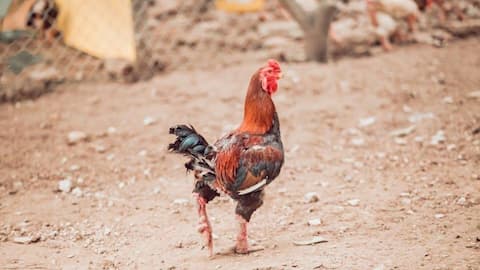Chickens fed Viagra and shilajit ahead of cockfight season
What's the story
Ahead of Sankranti celebrations in rural Andhra Pradesh, an unexpected controversy has taken flight. As the festival approaches, breeders are resorting to unconventional measures, including feeding chickens Viagra and shilajit. This practice aims to salvage roosters weakened by the Ranikhet disease, but it sparks concerns about both the birds' well-being and potential consequences for human consumers.
Tradition or controversy
Tradition meets controversy
Cockfights, deeply embedded in the heart of Sankranti festivities, draw colossal sums in bets, creating an age-old tradition that faces a hurdle this year due to the outbreak of the Ranikhet disease. The disease leaves trained roosters unfit for the much-anticipated "fights to the death," casting a shadow on the otherwise lively celebration in rural Andhra Pradesh.
Information
What is the Ranikhet disease?
Ranikhet disease, commonly known as Newcastle disease, stands as a significant viral affliction among poultry, impacting various birds. Chickens are exceptionally vulnerable, facing rapid and severe mortality unless preventive measures like vaccination are diligently implemented. This respiratory disease is caused by an Avian paramyxovirus type 1 (APMV-1) virus.
Unconventional
Unconventional measures
In the quest to salvage the weakened roosters, breeders are turning to unusual methods. Investigations reveal that chickens are being fed aphrodisiacs meant for human consumption like Viagra and shilajit, introducing an uncharted territory for the fighting birds. This unexpected twist has ignited debates among both traditionalists and those concerned about the ethics and implications of such practices.
Shortcuts
Shortcuts and sacrifices
Breeders justify the unconventional feeding practices, citing the enormous costs incurred in saving the roosters from disease. However, concerns arise as experts warn that while these methods may offer a temporary performance boost, they could have long-term detrimental effects on the birds. The financial investment in preserving the fighting breed clashes with the potential harm inflicted upon the very essence of the roosters' nature.
Risks
Risks beyond the rooster ring
Experts caution against potential mutations in the birds, posing risks when consumed by humans. The introduction of aphrodisiacs to boost fighting spirit raises questions about the unknown consequences on both the birds and those who might consume their meat. As the festival draws near, between tradition and innovation in Andhra Pradesh's cockfighting, the scene finds itself at a crossroads, leaving spectators and enthusiasts pondering the future of this rural tradition.
